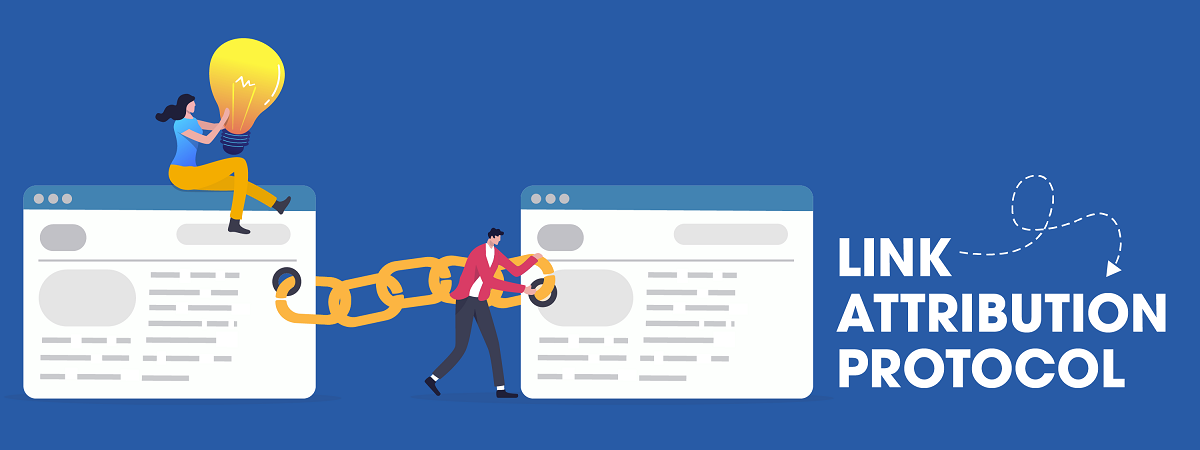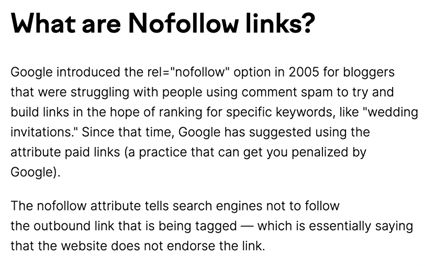AOP Link Attribution Protocol; Summary of Principles

Introduction
Following feedback from several of its publisher members, the AOP aims to raise awareness of fair link attribution and encourage best practice among the digital publishing community, as we continue to move towards a fairer, more transparent ecosystem.
As the leading official body representing so many of the UK’s publishing groups, the AOP is perfectly positioned to communicate the value of a ‘Link Attribution Protocol’ and facilitate its implementation.
The ‘Protocol’ is based on evidence and feedback gathered from members and provides a practical solution, supported by the AOP’s publisher member collective. The representatives involved encourage wider adoption from all other key industry stakeholders, to help ensure publishers are suitably credited for the original content they produce.
What is the issue?
Premium publishers work hard to produce original content in the form of investigations, analysis or showbiz exclusives and, of course, they want as many people as possible to read their stories.
The issue is that not all publishers link back to the original source of a story – even if they name check the publication.
Why is linking important?
Fair attribution is vital to help publishers get credit for the time, money, and effort they put into sourcing, investigating, and producing original content.
As well as helping direct users to the original source of a story, linking is vitally important for SEO. Google uses links from ‘prominent websites’ as a signal to determine ‘authoritativeness’ – a key factor in determining ranking.
Examples:
- The Times’ Insight team published an investigation into Prince Michael of Kent selling access to Putin. This was picked up by other publishers – such as Sky News – which referenced The Times but did not link to their story. Below is a snippet from the article where it would make the most sense to link from:
- In June The Sun had the world exclusive on Matt Hancock’s affair with Gina Coladangelo but linking to the original story was indiscriminate. The BBC linked but many others did not. The Mirror linked to the original story but made the link nofollow.
- Telegraph - quotes The Sun, includes Twitter post, no link
- East Anglian Daily Times - same as Telegraph
- WalesOnline - link to The Sun story - (as of June 29, no link)
- NottinghamLive - links to The Sun story (but link is nofollow) - (as of June 29, no link)
Does it need to be a follow link?
Yes. Follow links are important because they pass link value on to the recipient. Publishers should be supporting each other and doing everything they can to make sure original reporting is rewarded.
A nofollow is primarily used to indicate a commercial relationship to Google or because you don’t want search engines to associate your website with the site you are linking to.
According to SEMrush – an online visibility management and content marketing SaaS platform – a nofollow link is defined as:

There is no reason to add nofollow when linking to a valuable resource like the original source of a story from a premium publisher.
Yes, it could benefit a competitor but if every publisher applies the same standards, then everyone enjoys the benefits.
AOP Link Attribution Protocol
Publishers supporting this Protocol and who are committed to fair attribution should follow the process outlined below:
Registering for the Protocol:
- Publishers will need to create an attribution email address – we suggest all emails follow the same format for ease – e.g. attribution@thesun.co.uk
- Each publisher will need to decide which individuals are included in the email group (e.g. it could be senior members of the audience, production, and editorial teams)
- Publishers need to share this email address with Jenna.Nord@UKAOP.org, including the names of individuals included in the email group
- AOP will make this email address available to all participants via a dedicated area with the AOP website
Protocol Process for Registered Publishers:
- If Title A notices that Title B has quoted or referenced their exclusive content but not included a link to the relevant article, Title A can email Title B at the attribution email address with the following information:
- Title B article that quotes or references Title A’s piece of original content
- Title A’s article demonstrating that it is genuinely exclusive/original content
- It is then up to the group of individuals on Title B’s attribution team to decide how to proceed – if they agree with Title A that correct attribution has been overlooked, they should add the appropriate link
- All links to original content should be follow links, not nofollow
- The hyperlink anchor text should be Title’s publication name (e.g. The Times)
- Title A may request Title B hyperlinks on a different phrase, but this is not obligatory
- Link requests should be submitted in a reasonable time frame – Title B should not be expected to update stories more than a few weeks old by adding links
- The best practice linking guide will be supported, hosted and promoted on the AOP website
Appendix
- Surfacing useful and relevant content - Google News Initiative
Authoritativeness signals help prioritise high-quality information from the most reliable sources available. To do this, our systems are designed to identify signals that can help determine which pages demonstrate expertise, authoritativeness and trustworthiness on a given topic, based on feedback from Search raters. Those signals can include whether other people value the source for similar queries or whether other prominent websites on the subject link to the story.
- More guidance on building high-quality sites - Google Search Central
Does the article provide original content or information, original reporting, original research, or original analysis?